
 |
|
|
Corn
Volume 61 Number 19 Date 12/08/2016 WESTERN BEAN CUTWORM - Moth counts increased moderately after a three-year collapse. The state cumulative capture of 1,530 moths in 75 traps (20 per trap) was a substantial increase from the 644 in 96 traps (seven per trap) moths collected last season, yet moderate in comparison to counts registered during the 2007-2012 surveys and the 12-year average of 23 moths per trap. The highest individual count for the nine-week monitoring period was 145 moths near Markesan in Green Lake County. Larvae were also more common than anticipated this season and infested approximately 9% of the 458 corn sites surveyed in August and September. Damage to both traited and non-traited corn hybrids was reported. CORN ROOTWORM - Review of annual beetle survey data shows that populations decreased from 2015 levels across southern, central and east-central Wisconsin, while beetle counts in the west-central and northern counties were markedly higher. Averages declined in five of the nine crop districts and increased in four. The largest decreases were found in the south-central and southeast districts where averages fell sharply from 0.8 to 0.4 beetles per plant and from 0.7 to 0.2 beetles per plant, respectively. By contrast, the survey found substantially higher averages in west-central and northern Wisconsin, particularly in the northeast where the district count more than tripled from 0.2 to 0.7 beetles per plant. Despite regional increases, the 2016 state average of 0.5 beetles per plant still represents a decrease from the 2015 average of 0.6 per plant. Results of the survey suggest a greater threat of larval rootworm damage to non-Bt continuous corn in the northern and west-central counties next season, while beetle pressure may be lower across the southern, central and east-central areas. EUROPEAN CORN BORER - An increase in conventional corn acreage due to lower commodity prices apparently favored larval populations this fall. The 75th annual larval abundance survey in September and October found a state average of 0.11 borer per plant, an increase from last year's historical low of 0.02 borer per plant. Minor population increases from 2015 were documented in seven of the nine crop districts, all except the east-central and northeast regions. Larval densities in the central area rose to 0.24 borer per plant, or 24 per 100 plants, the highest average recorded in that area since 2007. Although more sites had economic averages above 1.0 larva per plant than in recent years, and second-generation larvae were detected in 49 of the 229 fields (21%) surveyed compared to 14% last fall, the very low state average of 0.11 borer per plant indicates that Bt corn continues to suppress corn borer populations and reduce the pest status of this insect in Wisconsin. BLACK CUTWORM - Migrants began arriving in the state by March 29 and an initial cutting date of May 20 was anticipated based on an April 17 biofix. The spring trapping survey registered 1,835 moths in 43 traps from March 15-June 1, with a peak from April 21-May 4. Light infestations developed in corn by early June as a result of the migration and favorable field conditions, but significant injury was not reported or observed. CORN EARWORM - A late-season migration yielded a cumulative total of 6,402 moths in 16 traps, with a well-defined peak from August 18-31. Almost one-third of the moths (31%) were captured at the Ripon monitoring site during the last week of August. Compared to 2015, the migration was larger and lengthier, with the heaviest flights concentrated in Columbia and Fond du Lac counties. Late sweet corn and other susceptible crops such as tomatoes and snap beans remained under a moderate to severe threat until mid-September. -- Krista Hamilton, DATCP Entomologist XANTHOMONAS LEAF BLIGHT - Surveys for this bacterial disease new to the U.S. yielded negative results. Corn leaf samples were collected from 105 fields between August 5 and September 15 and processed at the Plant Industry Lab. One suspect sent to a USDA identifier for definitive confirmation was determined to be negative. Xanthomonas leaf blight is not yet known to occur in Wisconsin. This leaf streak disease causes symptoms similar to gray leaf spot, but Xanthomonas cannot be managed with fungicides. It remains unclear how it was introduced into the U.S. or if it will impact corn yields. The USDA-APHIS does not consider Xanthomonas to be of quarantine significance. SOUTHERN RUST - This fungal disease was confirmed in Grant, Lafayette and Rock counties. Its arrival was too late in the season to cause yield losses. SEED CORN FIELD INSPECTION - Goss's wilt was diagnosed in 11 of 78 (14%) corn leaf samples from six Wisconsin counties this year: Dane, Eau Claire, Fond du Lac, Grant, Pierce and Walworth. This represents a marked decrease from 2015 when 15 of 39 (39%) of samples tested positive. Stewart's wilt was not detected in 2016. Northern corn leaf blight and anthracnose were very common in seed corn production fields again this season. -- Anette Phibbs, DATCP Plant Pathologist 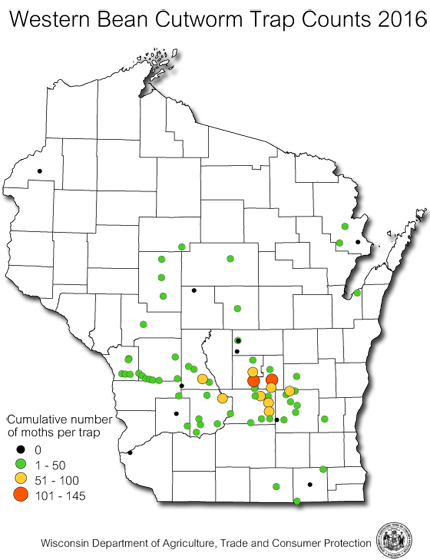
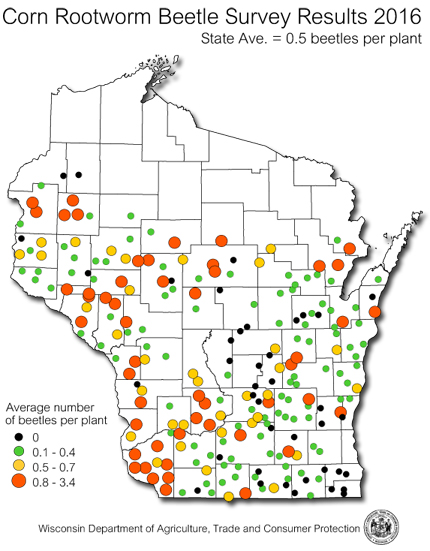
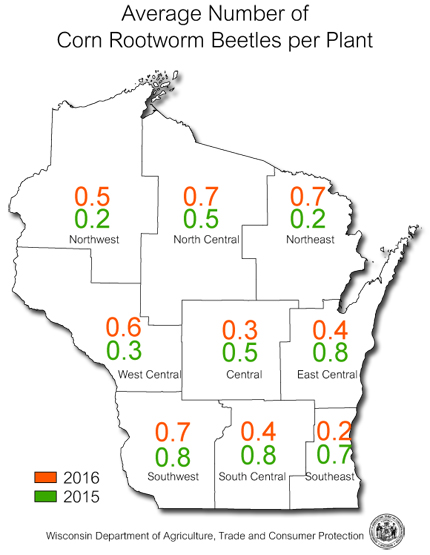
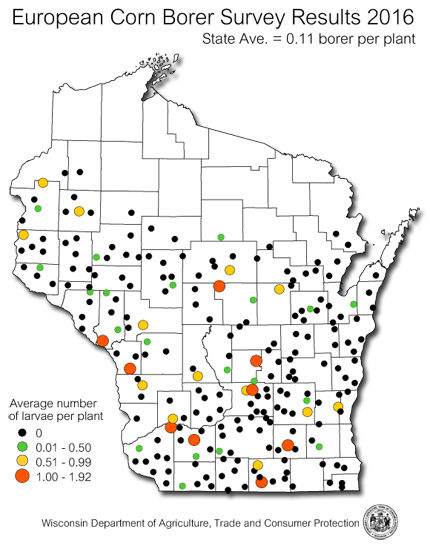
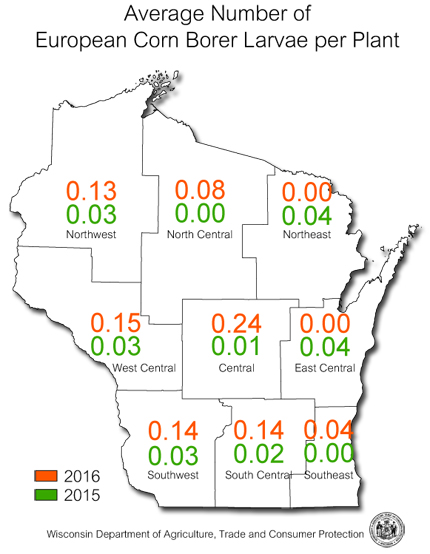
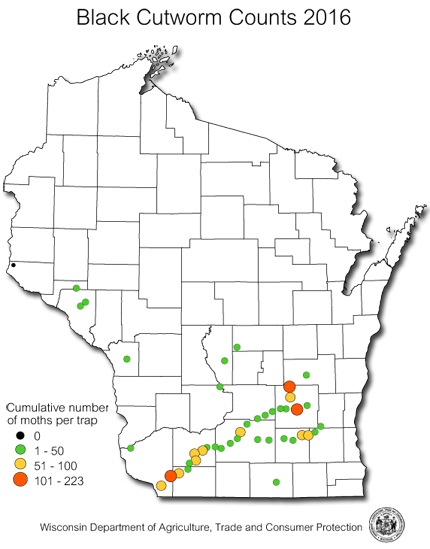
|
|
|